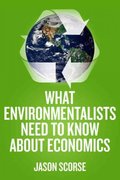Use the graph input tool to help you answer the following questions. You will not be graded on any changes you make to this graph. Note: Once you enter a value in a white field, the graph and any corresponding amounts in each grey field will change accordingly. Graph Input Tool ? 70 Daily Demand for Pollution Rights 63 Price 7 56 (Dollars per tonne) Quantity 270 49 Demanded (Millions of tonnes) 42 PRICE (Dollars per tonne) 35 28 21 Demand 14 0 0 30 60 90 120 150 180 210 240 270 300 QUANTITY (Millions of tonnes)Imagine the government has determined that the socially optimal quantity of sulfur dioxide emissions is 150 million tonnes per day. One way governments can charge rms for pollution rights is by imposing a per-unit tax on emissions. A tax (or price in this case) of $ per tonne of sulfur dioxide emitted will achieve the desired level of pollution Now imagine the Australian government does not know the demand curve for pollution and, therefore, cannot determine the optimal tax to achieve the desired level of pollution. Instead, it auctions off tradable pollution permits. Each permit entitles its owner to emit one tonne of sulfur dioxide per day. To achieve the socially optimal quantity of pollution, the government auctions off 150 million pollution permits. Given this quantity of permits, the price for each permit in the market for pollution rights will be $ The previous analysis hinges on the government having good information regarding either the demand for pollution permits or the optimal level of pollution (or both). Given that the appropriate policy (tradable permits or corrective taxes) can depend on the available information and the policy goal, consider the following scenario. Imagine the government knows the optimal quantity of pollution as well as how much it costs a particular polluting rm to reduce pollution at each quantity. Imagine the government knows the optimal quantity of pollution as well as how much it costs a particular polluting rm to reduce pollution at each quantity. If this is all the information the government has, which solution to reduce pollution is appropriate? Check all that apply. Tradable permits _ Corrective taxes









